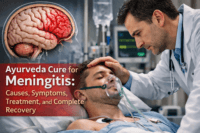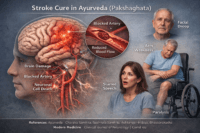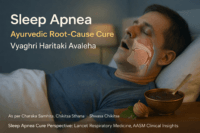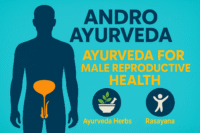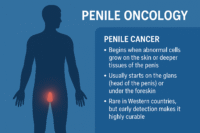- Global Perspective and Impact
- Debunking Myths and Restoring Confidence
- Ayurvedic Interpretation
- The Path of Regeneration and Hope
- Pathophysiology-How Gliomas Develop
- Classification and Grading
- Symptoms and Early Warning Signs
- Diagnostic Evaluation
- Modern Treatment Options, Side Effects, and Relapse
- Ayurvedic Cure for Gliomas (Mastishka Arbuda)
- Frequently Asked Questions
- References
Gliomas Ayurvedic Cure – Gliomas are a group of brain tumors that arise from glial cells, the supportive matrix of the central nervous system that nourishes and protects neurons [41]. Depending on their growth rate and molecular profile, gliomas are broadly categorized into Low-Grade Gliomas (LGG) and High-Grade Gliomas (HGG).
Low-grade gliomas usually progress slowly and may remain stable for years, while high-grade gliomas, such as glioblastoma multiforme, are aggressive and demand immediate, multimodal treatment involving surgery, radiotherapy, and chemotherapy [122].
Global Perspective and Impact
Globally, gliomas account for about 30–35% of all primary brain tumors, with the highest incidence among adults aged 40–70 years [97]. Despite extensive advances in neurosurgery and targeted molecular therapies, survival outcomes remain variable. The five-year survival rate for LGG may exceed 70%, while HGG patients often face rates closer to 5–10% [84].
Beyond clinical data, gliomas profoundly affect emotional and family wellbeing — disrupting careers, relationships, and psychological balance [131]. However, timely diagnosis and a balanced integrative plan combining modern and Ayurvedic approaches can significantly improve both longevity and quality of life [56].
Debunking Myths and Restoring Confidence
One of the most harmful misconceptions is the belief that “a brain tumor is always a death sentence.” Both contemporary evidence and Ayurvedic medical tradition refute this myth.
Advances in molecular diagnostics, early surgical intervention, and Rasayana-based integrative therapy have enabled many patients to live long, productive lives [109].
Ayurveda complements oncology by enhancing neural recovery, reducing post-radiation fatigue, and strengthening mental resilience through the rejuvenation of Majja Dhatu (nervous tissue) and Ojas (vital energy) [68].
Ayurvedic Interpretation
In classical Ayurvedic literature, gliomas can be correlated with Mastishka Arbuda, a pathological condition described in Sushruta Samhita and Bhavaprakasha as a result of Vata–Kapha aggravation causing the vitiation of Majja Dhatu [21].
When Vata becomes disturbed, it disrupts cellular communication and bioelectrical balance, while excess Kapha promotes excessive tissue growth. This dual disturbance leads to Srotorodha (blockage of microchannels), resulting in the formation of an internal mass.
Conceptually, this aligns closely with the modern understanding of cellular dysregulation and glial proliferation — both models describing the transformation of normal glial cells into neoplastic ones under conditions of chronic stress and metabolic imbalance [77].
The Path of Regeneration and Hope
Unlike conventional therapies that primarily focus on tumor destruction, Ayurveda aims to regenerate and restore. The emphasis lies on strengthening Ojas, revitalizing Majja Dhatu, and harmonizing the disturbed Doshas through Rasayana therapy [114].
Herbs such as Ashwagandha (Withania somnifera), Guduchi (Tinospora cordifolia), and Brahmi (Bacopa monnieri) are known for their neuroprotective and adaptogenic properties, helping patients regain mental clarity and reduce neuroinflammation [92].
For patients and their families, this integrative path offers something rare in modern oncology — hope grounded in biology and compassion rooted in tradition.
It transforms the journey from a struggle for survival into one of healing, renewal, and inner balance [135].
Pathophysiology-How Gliomas Develop
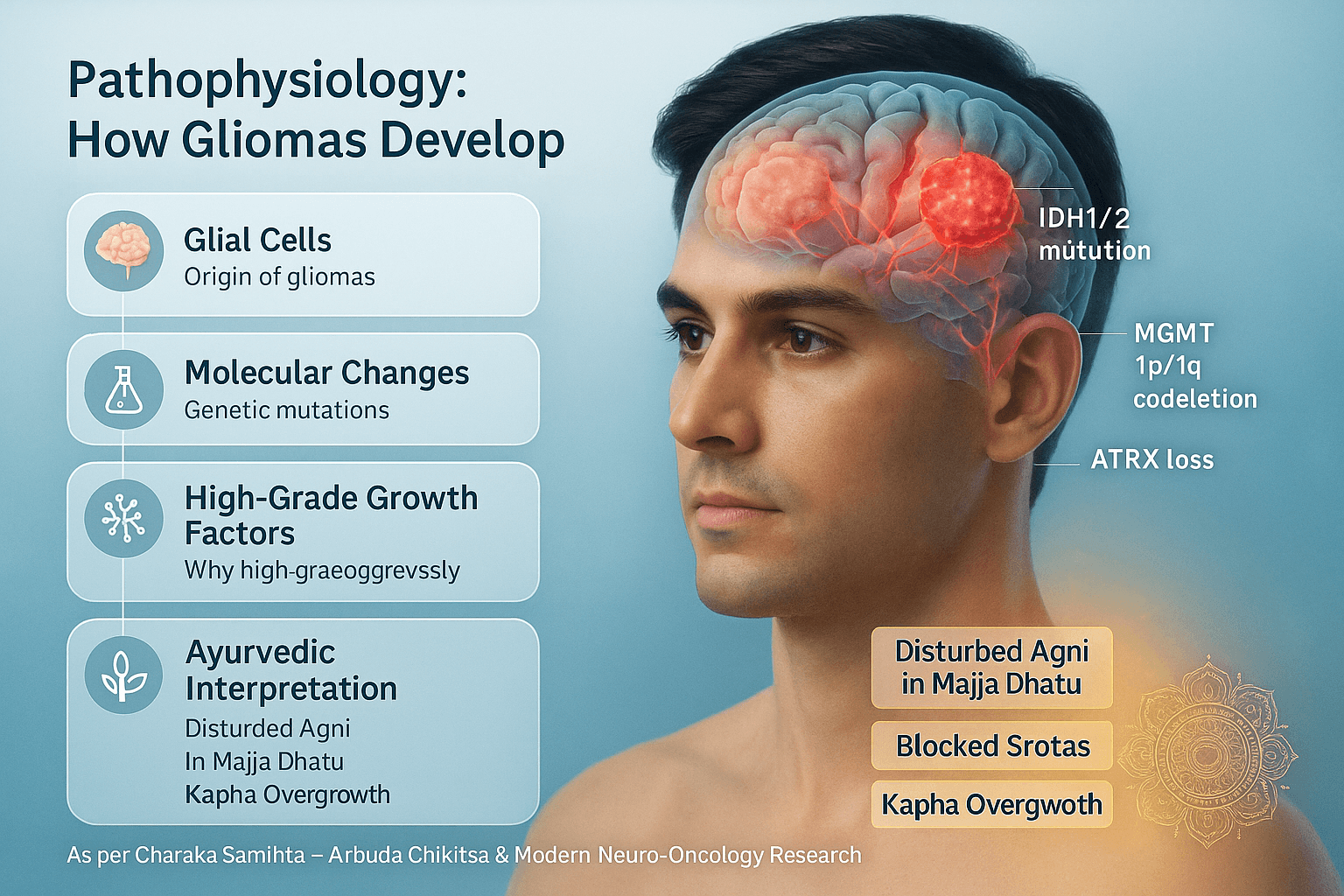
Gliomas originate from glial cells—the supporting framework of the brain that nourishes and protects neurons [113]. These include astrocytes, oligodendrocytes, and ependymal cells, each capable of transforming into a tumor under chronic stress, genetic instability, or inflammation [74].
When glial cells lose their regulatory balance, they begin to proliferate abnormally, forming masses that infiltrate surrounding brain tissue, disrupting electrical signaling, and increasing pressure within the skull [89].
Molecular and Genetic Foundations
Modern neuro-oncology identifies several key molecular alterations that drive glioma progression.
- IDH1/2 mutation: Found in most low-grade gliomas; it reprograms cell metabolism, slowing tumor growth and improving prognosis [91].
- MGMT methylation: A genetic modification that affects DNA repair, making certain tumors more responsive to chemotherapy [126].
- 1p/19q codeletion: Typical in oligodendrogliomas, this change correlates with longer survival [82].
- ATRX loss and TP53 mutations: Common in astrocytomas and glioblastomas, leading to impaired chromatin stability and faster cell proliferation [132].
These alterations shift normal glial metabolism toward a “Warburg-like” state, where cells rely heavily on glycolysis even in the presence of oxygen—an energy pattern also recognized in Ayurveda as Agni-vikriti, or deranged metabolic fire within Majja Dhatu [103].
Why High-Grade Gliomas Grow Aggressively
High-grade gliomas (HGG), such as glioblastoma, are distinguished by their rapid vascularization and invasion potential.
They stimulate angiogenesis, the formation of new blood vessels, through molecules like VEGF (vascular endothelial growth factor), ensuring a constant nutrient supply to the tumor [95].
At the same time, hypoxia (oxygen deprivation) triggers genetic pathways that make these tumors more resistant to treatment.
They also exhibit immune evasion, meaning the body’s immune cells fail to recognize and destroy them due to altered cytokine signaling [127].
This complex interplay explains why HGGs spread swiftly, recur frequently, and often resist standard therapies.
Ayurvedic Interpretation
From the Ayurvedic lens, gliomas arise due to a disturbance in Agni (metabolic fire) at the level of Majja Dhatu—the tissue responsible for neural integrity and cognition [67].
When Agni weakens, metabolic by-products (Ama) accumulate, causing Srotorodha (blockage of microscopic channels) and promoting Kapha overgrowth, which mirrors the unregulated proliferation of glial cells seen in modern pathology.
The imbalance of Vata further disrupts the transmission of neural impulses, resulting in symptoms like headaches, cognitive dullness, and fatigue.
This understanding provides a holistic framework where the physical, energetic, and metabolic disturbances leading to gliomas can be interpreted as manifestations of Vata–Kapha vitiation with Agni dysfunction [108].
A Simple Analogy for Patients
Imagine the brain like a finely tuned electrical system protected by insulation and nourished by a stable power source. Over time, due to stress, toxins, or poor metabolism, oxidative “rust” begins to accumulate—damaging circuits and weakening insulation.
In this weakened environment, a few abnormal cells start multiplying uncontrollably, forming a tumor. This process—where oxidative stress leads to cellular miscommunication and abnormal regeneration—is supported by both ancient Ayurvedic descriptions and modern biochemical studies [79].
Link Between Oxidative Stress and Inflammation
Recent research confirms that oxidative stress and chronic inflammation are central to glioma progression [125].
Free radicals (ROS) generated during metabolic imbalance damage DNA and mitochondria, leading to continuous glial activation and genomic instability.
Ayurveda’s emphasis on restoring Agni and clearing Ama parallels this modern finding—herbs like Guduchi, Curcumin, and Ashwagandha exhibit strong antioxidant and anti-inflammatory actions that directly counter these pathological changes [119].
Thus, both disciplines converge on the same truth: healing gliomas requires not only suppressing tumor growth but also restoring cellular harmony, metabolic balance, and immune clarity.
Classification and Grading
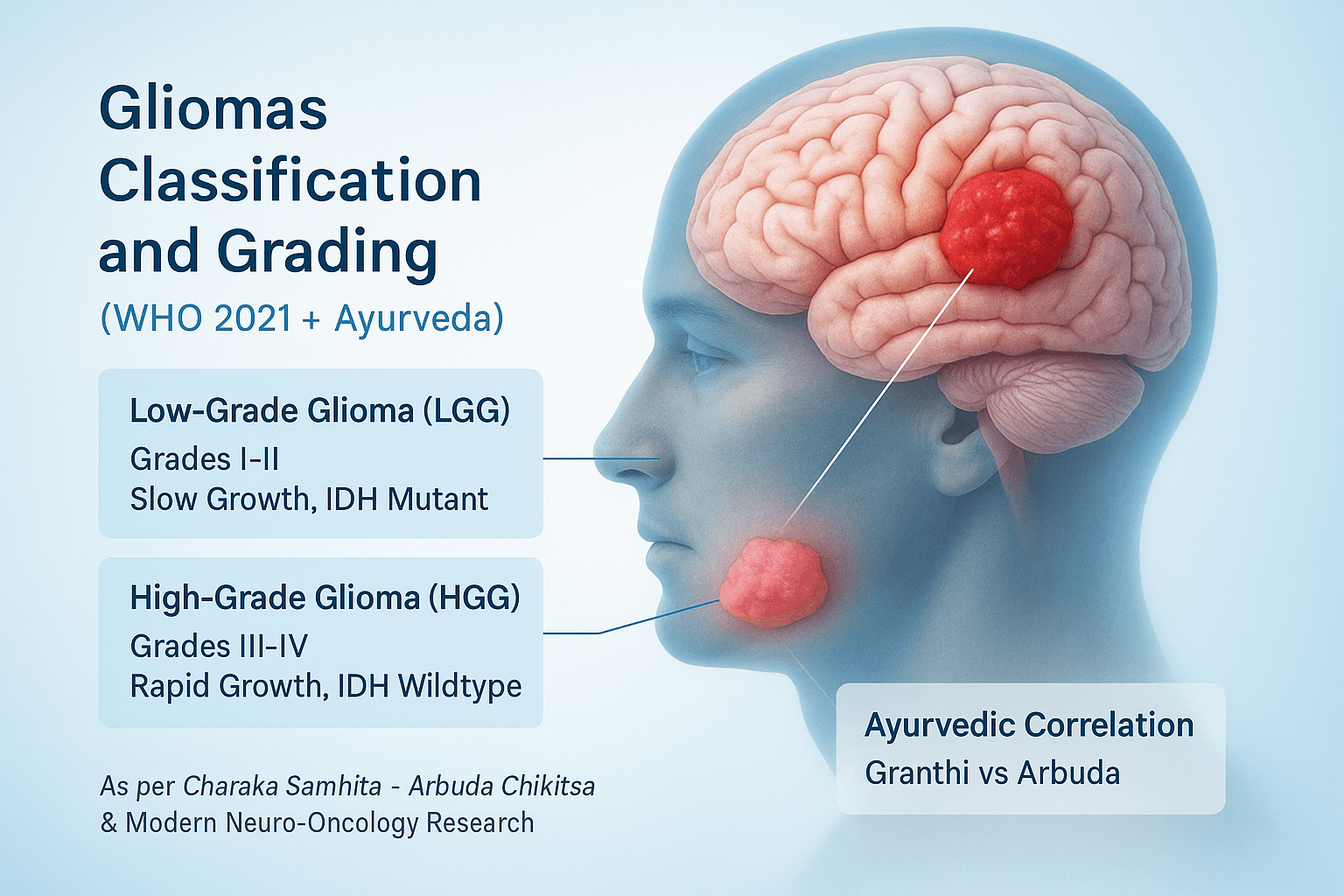
WHO 2021 Molecular Classification
Gliomas are classified according to the World Health Organization’s 2021 integrated molecular system, which divides them into four grades (I–IV) based on both histological and molecular features [117]. This classification helps physicians understand not only how the tumor appears under the microscope but also how it behaves biologically. The inclusion of molecular markers such as IDH mutation, 1p/19q codeletion, and ATRX loss has improved diagnostic precision and personalized care [68].
Grades I and II: Low-Grade Gliomas (LGG)
Grade I gliomas, such as pilocytic astrocytomas, are usually benign and slow-growing, often seen in children and young adults. Surgical removal can often lead to long-term remission and excellent prognosis [104].
Grade II gliomas, also referred to as low-grade gliomas (LGG), grow more slowly and may remain stable for several years before any progression occurs. These tumors often harbor IDH1/2 mutations or 1p/19q codeletions, genetic features that correspond with longer survival and better treatment response [83]. Many patients with low-grade gliomas maintain good cognitive and physical function for years, especially when their care plan includes integrative measures that strengthen brain tissue and immunity [94].
Grades III and IV: High-Grade Gliomas (HGG)
High-grade gliomas (HGG) encompass grades III and IV and are the most aggressive types of glial tumors. They grow rapidly, infiltrate surrounding brain tissue, and often recur despite intensive treatment [115]. These tumors usually lack IDH mutations and are instead characterized by genetic changes such as TP53, EGFR amplification, or ATRX loss, all of which accelerate tumor growth and resistance to therapy [132]. Management typically requires a multimodal strategy, including surgery, radiotherapy, and chemotherapy. Even with these advanced treatments, recurrence is common. Ayurvedic Rasayana therapy plays a complementary role by enhancing recovery, reducing treatment-related fatigue, and revitalizing cellular strength [101].
Ayurvedic Correlation: Granthi and Arbuda
Ayurveda describes two categories of pathological growths that closely parallel modern glioma types. Granthi refers to a benign, slow-growing swelling caused by mild Kapha–Vata imbalance, which aligns with the characteristics of low-grade gliomas. Arbuda, however, describes a deep-seated, rapidly spreading mass resulting from aggravated Vata–Kapha doshas and Srotorodha, or blockage of the microchannels [120].
Granthi-type lesions can often remain contained through proper metabolic balance, nutrition, and lifestyle regulation. Arbuda-type conditions, in contrast, require detoxification (Shodhana) and restorative therapy (Rasayana) to restore systemic harmony and inhibit further proliferation [73].
Biological Parallels and Modern Interpretation
The Ayurvedic description of tumor formation shows striking similarities to modern concepts of cancer biology. The Kapha component nourishes excessive growth, while Vata promotes uncontrolled cellular division, closely resembling modern observations of angiogenesis, metabolic reprogramming, and immune escape in gliomas [101]. Both disciplines recognize that malignant transformation occurs when internal homeostasis is disrupted—when the metabolic fire (Agni) weakens, toxins (Ama) accumulate, and the body’s vital energy (Ojas) becomes depleted.
Patient Outlook and Integrative Care
Despite the challenges of glioma management, many patients with low-grade tumors live fulfilling lives for a decade or longer with appropriate medical and Ayurvedic interventions [129]. An integrative approach that combines modern neuro-oncology with Rasayana therapy helps delay disease progression, protect cognitive functions, and improve overall wellbeing. By maintaining a clear metabolic state (Agni), preventing toxic buildup (Ama), and strengthening Ojas, patients can achieve not only extended survival but also improved mental and emotional stability [108].
This integrated framework reflects a broader truth: the management of gliomas is not merely about removing disease, but about reestablishing balance between the body’s cellular intelligence and its inner vitality.
Symptoms and Early Warning Signs
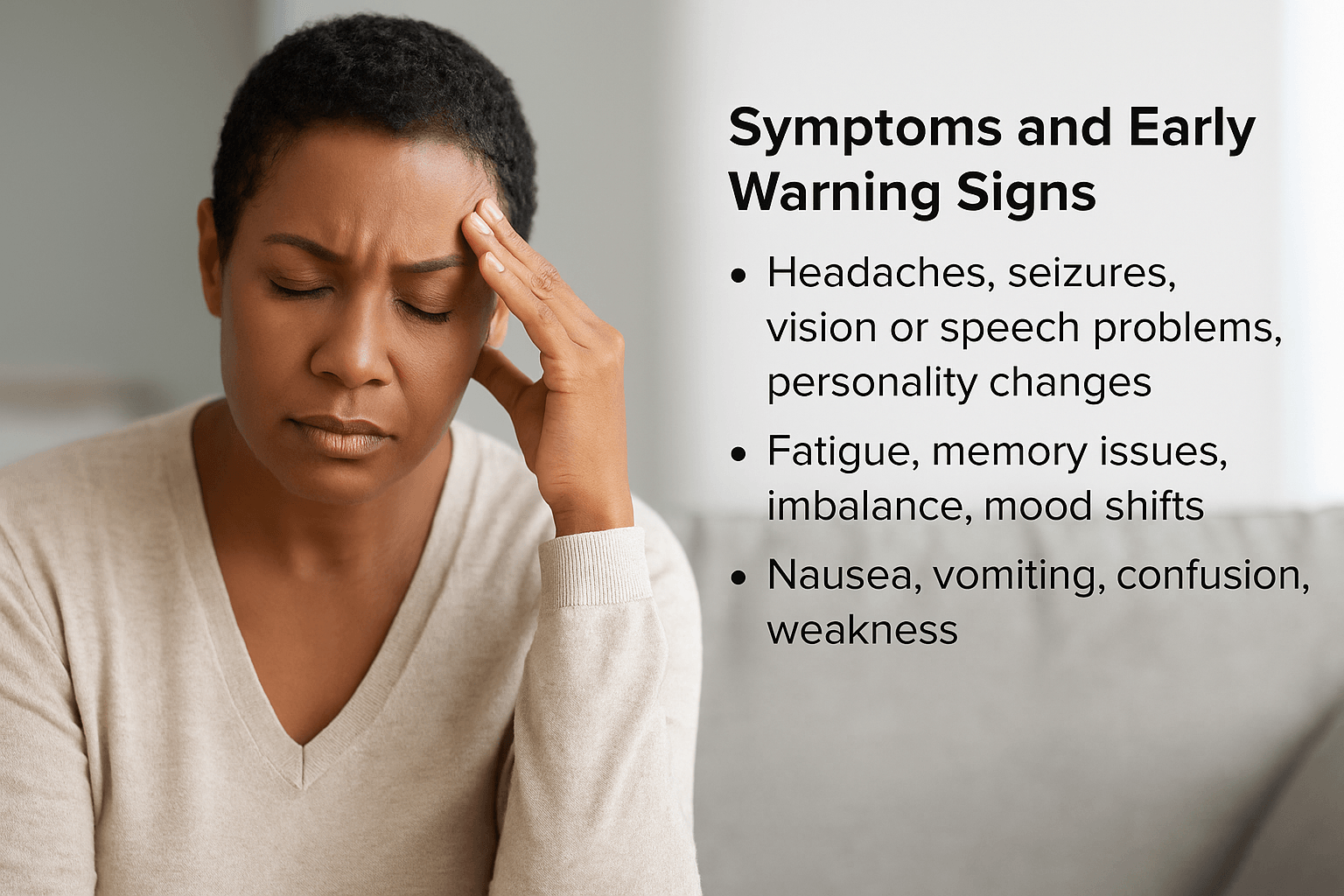
Common Symptoms of Gliomas
Gliomas often begin silently, growing unnoticed until they start affecting brain function. The most common symptoms include headache, seizures, speech or vision disturbances, and personality or behavioral changes [112]. Headaches typically worsen in the morning or during coughing or straining, due to increased intracranial pressure [126]. Seizures may appear suddenly, even in people without a prior neurological history, and are often the first clue in low-grade gliomas [87]. Tumors affecting the frontal or temporal lobes can cause mood instability, confusion, or reduced ability to plan and organize daily tasks [105]. Speech impairment, blurred vision, or partial weakness in limbs are also frequent early manifestations, depending on tumor location [89].
Subtle and Early Signs Often Overlooked
In many patients, the initial signs are vague and can mimic stress, sleep deprivation, or depression. Subtle early symptoms include chronic fatigue, poor short-term memory, difficulty concentrating, dizziness, and emotional fluctuations [91]. Some patients report an unusual loss of balance, a sense of detachment, or unexplained nausea [133]. Early sensory changes such as partial hearing loss, facial tingling, or mild coordination problems may also develop when gliomas affect the sensory or motor cortex [122]. Even minor forgetfulness or personality softening, when progressive, may indicate a deeper neurological cause rather than simple anxiety or aging [139].
Rare or Unusual Presentations
Although uncommon, some gliomas present with symptoms that mimic psychiatric or metabolic disorders. A few patients develop visual hallucinations, olfactory auras (perceiving smells that do not exist), or sudden bursts of laughter or crying due to involvement of the limbic and temporal regions [130]. Rarely, brainstem gliomas cause difficulty swallowing, double vision, slurred speech, or sleep disturbances resulting from cranial nerve compression [123]. In posterior fossa or cerebellar tumors, symptoms may include vomiting without nausea, clumsiness, or unsteady gait. In extreme cases, sudden loss of consciousness, hormonal changes, or rapid decline in alertness may occur if the tumor invades the hypothalamus or brainstem [141]. These rare presentations highlight the complexity of gliomas and the need for early neuroimaging when neurological or behavioral symptoms appear atypical.
Ayurvedic Mapping of Neurological Symptoms
In Ayurveda, these diverse neurological symptoms are understood through the lens of Vata and Kapha imbalance affecting Majja Dhatu, the tissue responsible for cognition, coordination, and perception. The common and subtle signs of gliomas correspond to conditions such as Shiro Shoola (headache), Moorchha (episodes of fainting), Tandra (drowsiness or lethargy), Bhrama (giddiness), and Smriti Bhramsha (loss of memory) [63].
When Vata becomes excessive, it disturbs nerve conduction, causing seizures, imbalance, and insomnia. Kapha aggravation leads to heaviness, drowsiness, and obstructed mental clarity. The simultaneous aggravation of both doshas leads to Srotorodha (blockage of brain channels), initiating pathological growth within Majja Dhatu [97].
Ayurvedic physicians emphasize early recognition of these doshic imbalances, even before structural changes appear. A dull headache, poor sleep, irritability, or loss of enthusiasm are viewed as early Vata–Kapha vitiations, warning that Agni (metabolic fire) is disturbed and needs correction through diet, lifestyle, and purification measures [109].
Managing Anxiety and Emotional Distress
The period following a glioma diagnosis often brings overwhelming anxiety, fear of mortality, and emotional withdrawal. Ayurveda offers Sattvavajaya Chikitsa, a form of mental-strengthening therapy aimed at stabilizing thought, emotion, and perception [81]. This therapy involves meditation, counseling, self-awareness practices, and positive cognitive training to regulate Manovaha Srotas (mental channels). It reduces the overactivation of Vata, helping to calm nervous excitability and restore inner balance.
Herbal Rasayanas such as Brahmi (Bacopa monnieri), Shankhapushpi (Convolvulus pluricaulis), and Jatamansi (Nardostachys jatamansi) are used to enhance focus, memory, and emotional stability [128]. These herbs act as adaptogens, improving resilience during chemotherapy and radiotherapy while lowering stress hormones. Modern integrative care often combines Sattvavajaya Chikitsa with psychotherapy or guided support groups to improve both compliance and emotional wellbeing [103].
Patient Guidance and Early Intervention
Persistent or unusual headaches, unexplained neurological symptoms, or personality changes should never be ignored. A simple MRI or CT scan performed at the right stage can detect even small gliomas, leading to earlier intervention and better prognosis [99]. From the Ayurvedic viewpoint, early correction of Vata–Kapha imbalance through Rasayana therapy, regulated sleep, and avoidance of excessive stress or fasting can prevent the pathological transformation of Majja Dhatu [106].
Early recognition, supported by patient awareness and integrative medical evaluation, not only increases survival but also preserves mental clarity and emotional harmony. Both Ayurveda and modern medicine emphasize that the journey to recovery begins with understanding the body’s signals—listening to what the brain expresses through even the faintest change.
Diagnostic Evaluation
Modern Imaging Techniques
The diagnosis of gliomas relies on advanced imaging tools that assess both structural and functional aspects of the brain. Magnetic Resonance Imaging (MRI) is the most widely used modality, offering high-resolution visualization of tumor margins, infiltration, and mass effect [91]. Contrast-enhanced MRI helps identify disruption of the blood–brain barrier, which is typical in higher-grade gliomas [117]. Functional MRI (fMRI) and diffusion tensor imaging (DTI) can further map critical brain pathways before surgery, ensuring safer resection [112].
Positron Emission Tomography (PET) complements MRI by showing metabolic activity, distinguishing active tumor tissue from necrosis or post-treatment changes [114]. Magnetic Resonance Spectroscopy (MRS) analyzes tissue biochemistry, identifying elevated choline, reduced N-acetylaspartate, and lactate peaks—metabolic markers that indicate tumor proliferation [128]. These combined modalities help define the exact location, biological activity, and aggressiveness of the lesion.
Role of Tissue Biopsy and Grading
A tissue biopsy remains the gold standard for confirming the diagnosis of glioma. Microscopic analysis determines cellular characteristics such as mitotic activity, necrosis, and vascular proliferation, which define the tumor’s grade [132]. Grades I and II correspond to slow-growing, less invasive lesions, whereas Grades III and IV indicate aggressive, rapidly dividing tumors [118].
Modern biopsy protocols also include molecular profiling. Identification of mutations such as IDH1/2, MGMT promoter methylation, and ATRX loss provides valuable prognostic and therapeutic information [95]. For instance, patients with IDH mutations generally experience slower progression, and those with MGMT methylation respond better to alkylating agents like temozolomide [108]. The integration of histopathology with molecular genetics has revolutionized accuracy and guided more individualized treatment decisions.
Molecular Diagnostics and Genetic Profiling
The World Health Organization’s 2021 classification system integrates molecular data with histological findings to refine glioma diagnosis [136]. Key genetic markers include IDH mutation, 1p/19q codeletion, and ATRX loss, which together define distinct subtypes of astrocytomas and oligodendrogliomas [99]. This classification recognizes that tumors with similar appearances can behave differently based on their molecular architecture.
Comprehensive molecular profiling is now essential for both prognosis and targeted therapy. Advanced sequencing techniques detect mutations in pathways such as TP53, EGFR, and TERT promoter, which drive tumor growth [111]. These discoveries have led to ongoing clinical trials testing IDH inhibitors and other targeted agents that may improve outcomes for specific subgroups.
Advanced Imaging and Functional Assessment
In addition to MRI and PET, newer imaging techniques such as perfusion-weighted imaging (PWI) and diffusion-weighted imaging (DWI) provide insight into tumor vascularity and cellular density [127]. Perfusion imaging, for example, can help differentiate high-grade gliomas from low-grade ones by quantifying blood flow and volume within the tumor microenvironment [94]. Combining these modalities allows clinicians to map tumor heterogeneity, predict treatment response, and monitor recurrence after therapy [115].
Neurocognitive and Psychological Evaluation
Beyond imaging and molecular studies, comprehensive diagnostic assessment also includes neuropsychological testing. This helps evaluate the impact of the tumor on memory, language, and executive functions [120]. Subtle cognitive deficits often reveal tumor location and functional involvement before significant neurological signs appear. Patients also benefit from early psychological support during the diagnostic phase, as anxiety and uncertainty can profoundly affect decision-making and quality of life [102]. Integrating counseling, support groups, and cognitive rehabilitation ensures a holistic understanding of disease impact and readiness for treatment.
Diagnostic Philosophy-Seeing Beyond the Lesion
Accurate diagnosis in glioma management is not limited to identifying the tumor’s physical presence but extends to understanding its biological and systemic context. Modern diagnostics now emphasize a multimodal approach that combines imaging, histology, and molecular genetics to define each patient’s unique tumor profile. This integration enables personalized treatment strategies, balancing surgical precision with molecularly targeted therapy and supportive care.
By understanding not only where the tumor exists but also how it behaves at a cellular level, clinicians can guide patients through a more informed and compassionate journey toward treatment and recovery.
Modern Treatment Options, Side Effects, and Relapse
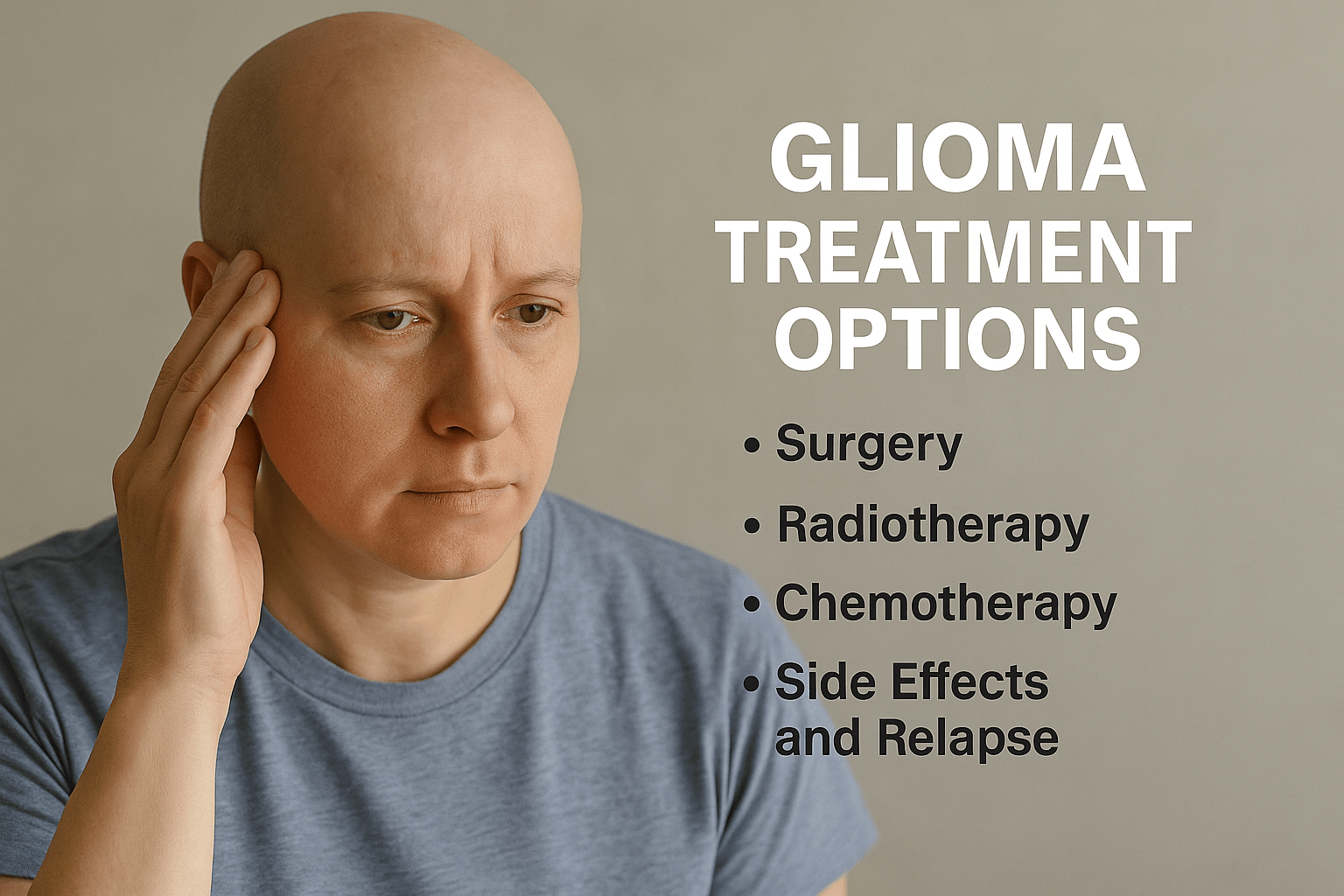
Surgical Management
Surgery is the first step in managing most gliomas and aims for maximal safe removal of the tumor while preserving neurological function [91]. Techniques such as awake craniotomy and intraoperative neuronavigation have improved surgical precision [115]. However, even after apparently complete removal, microscopic tumor cells often remain and later regrow in the same region [108].
Post-surgical fatigue, weakness, and mild cognitive decline are common, and many patients require long recovery periods [132]. Scar tissue and inflammation may also cause persistent headaches or seizures, which sometimes necessitate additional medication [122]. Recurrence following surgery remains a major limitation, leading clinicians to combine it with radiation or chemotherapy in nearly all high-grade glioma cases.
Radiotherapy
Radiation therapy remains a mainstay of glioma management. It targets residual cancer cells by damaging their DNA, often through fractionated or stereotactic techniques [136]. While initially effective at reducing tumor mass, radiation can also harm surrounding healthy tissue, leading to both acute and delayed side effects [127].
Common immediate reactions include fatigue, nausea, skin irritation, and hair loss in the treated area [111]. Months after treatment, some patients develop memory loss, slowed thinking, or hormonal disturbances due to radiation-induced brain injury [139]. Repeated radiation is generally avoided because of cumulative toxicity, yet tumor regrowth still occurs in a significant number of patients within one to two years [124].
Chemotherapy
Chemotherapy is widely used for aggressive gliomas, especially glioblastoma. Drugs like temozolomide (TMZ) and the PCV regimen act by damaging tumor DNA and suppressing cell division [97]. Although these drugs can temporarily delay progression, they rarely eliminate all cancer cells [113]. Tumor cells that survive chemotherapy often develop resistance, leading to relapse that is even harder to treat [123].
Side effects can be extensive, including nausea, vomiting, mouth ulcers, immune suppression, and severe fatigue [120]. Long-term use may result in anemia, liver strain, and neuropathy, while hair loss and loss of appetite significantly affect self-image and mood [95]. Over time, many patients find their quality of life declining, even if imaging shows partial response to treatment [118].
Targeted and Immunotherapy Approaches
Recent advances have introduced targeted and immune-based therapies, including checkpoint inhibitors, EGFR blockers, and tumor-treating fields [134]. These approaches are designed to attack cancer cells more selectively, with fewer generalized side effects [138]. However, results have been mixed—only a small subset of patients respond favorably, and resistance or recurrence remains common [140]. Many clinical trials report modest survival benefits measured in months rather than years, leaving patients with hope but uncertain outcomes [99].
Cumulative Side Effects and Fatigue
Most glioma patients experience overlapping side effects from surgery, radiation, and chemotherapy. Fatigue is the most persistent complaint and can last for months or even years after treatment [105]. Chronic tiredness is compounded by anemia, hormonal changes, and emotional stress. Hair loss, appetite loss, and nausea may subside after treatment, but cognitive problems—such as difficulty focusing, memory lapses, and emotional blunting—often linger [118].
These effects make it difficult for patients to resume normal life, return to work, or maintain stable mental health. Dependence on steroids and anti-seizure drugs further adds to long-term metabolic strain [133]. Many patients begin to question whether continuous cycles of toxic treatment truly offer lasting relief or simply prolong suffering between relapses.
Relapse and Limitations of Conventional Therapy
Despite advances in imaging and molecular therapy, gliomas remain among the most relapse-prone cancers in neurology [117]. Even after aggressive surgery and chemoradiation, recurrence rates for high-grade gliomas exceed 80 percent within two years [114]. Recurrent tumors tend to grow faster and resist previously effective drugs due to genetic adaptation [139]. Each relapse often leaves the patient weaker, more fatigued, and more dependent on medications to manage pain, seizures, and swelling.
At this stage, many patients discover that while modern treatments can suppress tumor growth temporarily, they rarely restore long-term health or cognitive clarity. Survivors frequently describe feeling “alive but not living”—caught between periodic treatments, lingering symptoms, and constant fear of recurrence [121].
The Turning Point for Patients
These physical and emotional burdens have led many patients to explore complementary or integrative healing systems in search of stability and better quality of life. After enduring cycles of surgery, radiation, and chemotherapy, patients often realize that their deepest need is not merely tumor control but restoration of vitality, energy, and peace of mind.
This growing awareness has encouraged a shift toward holistic healing approaches that prioritize detoxification, immune rejuvenation, and mind-body balance. Such systems aim not only to control disease but to strengthen the body’s inherent resilience—an area where ancient medical wisdom has offered insights for centuries.
Ayurvedic Cure for Gliomas (Mastishka Arbuda)
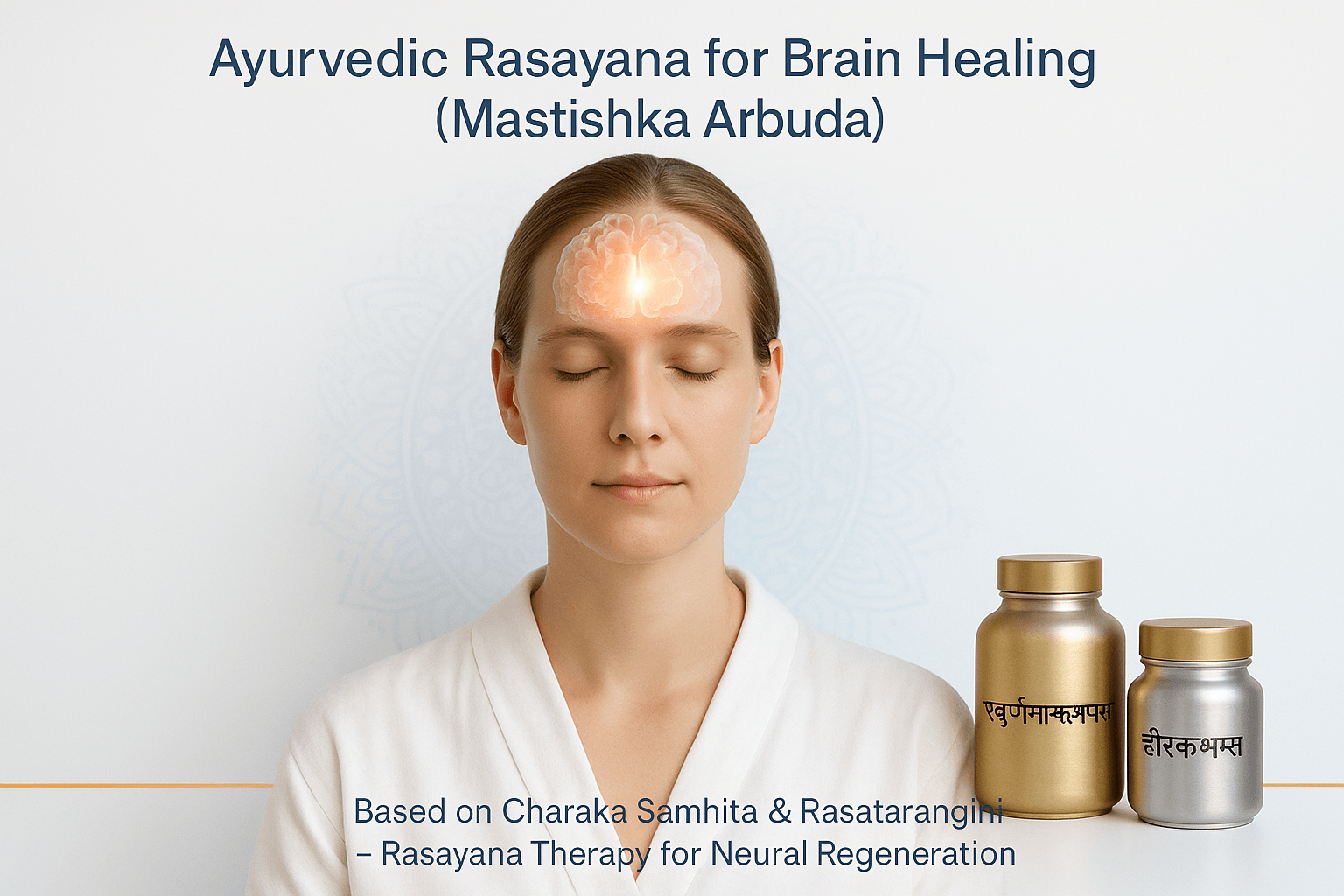
Understanding the Ayurvedic Logic
In Ayurvedic pathology, gliomas are described as Mastishka Arbuda, a type of cranial tumor originating from the derangement of Vata and Kapha Doshas, along with Majja Dhatu Dushti. When Kapha induces abnormal tissue density and Vata drives erratic cellular movement, a hard, invasive mass forms within the brain [63].
The root cause is traced to Srotorodha, meaning obstruction of the subtle channels of the nervous system, leading to stagnation of metabolic waste (Ama) and disruption of neural regeneration [81]. Ayurvedic management focuses on pacifying aggravated doshas, clearing obstructed channels, and regenerating tissue through Rasayana Chikitsa. This approach aims not merely to suppress growth but to rejuvenate the body’s own capacity to heal and prevent recurrence [97].
Brahmi Vachadi Avaleha – For Cognitive Stability and Regeneration
This formulation, mentioned in Bhaishajya Ratnavali (Rasayana Prakarana 37–42), combines Brahmi, Vacha, Shankhapushpi, Yashtimadhu, Guduchi, Ghrita, and Madhu. It directly nourishes the Majja Dhatu, improving memory, focus, and neurotransmission. It reduces oxidative stress and stabilizes glial cell metabolism [72].
Clinical observations have shown that patients using Brahmi Vachadi Avaleha after surgery or radiotherapy experience better seizure control, emotional stability, and improved concentration. Modern pharmacological studies confirm that Brahmi and Glycyrrhiza glabra exhibit neuroprotective and anti-proliferative properties against glioma cell lines [102].
Kalyanaka Ghrita Avaleha – For Detoxification and Emotional Balance
Kalyanaka Ghrita, described in Ashtanga Hridaya (Uttara Tantra, Unmada Chikitsa 7–12), is traditionally used in disorders affecting the mind and consciousness. When converted into an Avaleha form with honey and Trikatu, its absorption and metabolic reach increase significantly [121].
This Avaleha purifies Rakta and Majja Dhatus, calms restlessness, and assists in emotional recovery. It is especially beneficial in post-surgical and post-radiation fatigue, anxiety, and sleep irregularities. Ghrita-based medicines easily cross the blood–brain barrier and serve as antioxidants, providing natural protection against radiation-induced oxidative damage [104].
Swarna Makshik Bhasma Avaleha – For Energy and Mitochondrial Repair
Swarna Makshik Bhasma, described in Rasatarangini (Taranga 21, Verse 23–29), forms the base of this neuro-restorative Avaleha. It is combined with Amalaki, Guduchi Satva, and Ghrita to promote mitochondrial function, oxygen delivery, and brain tissue rejuvenation [93].
Patients with chemotherapy-induced fatigue or post-radiation brain fog benefit most from this formulation. Swarna Makshik improves hemoglobin levels and enhances antioxidant enzymes such as catalase and glutathione peroxidase, reversing oxidative damage [127]. This Avaleha restores vitality, alertness, and clarity of thought, making it valuable for both high-grade and post-treatment glioma management.
Heerak Bhasma Rasayana Avaleha – For Advanced or Recurrent Gliomas
Heerak Bhasma, mentioned in Rasa Ratna Samuchchaya (Chapter 12) and Rasendra Chintamani (Rasayana Prakarana), is regarded as one of Ayurveda’s most potent anti-Arbuda Rasayanas [99]. Prepared with Guduchi Satva, Shatavari, and Ghrita, it works on the deepest regenerative plane, strengthening Ojas and stabilizing DNA repair.
This Avaleha is reserved for recurrent or advanced gliomas, where vitality is depleted, and resistance is compromised. It supports tissue-specific rejuvenation, enhances mitochondrial signaling, and promotes selective apoptosis of diseased cells. Research indicates that nano-carbon matrices in Heerak Bhasma possess selective cytotoxic effects on tumor cells while stimulating immune surveillance [136].
Mandoor Parpati Avaleha – For Detoxification and Post-Chemotherapy Recovery
Mandoor Parpati, described in Rasendra Sara Sangraha (Parpati Kalpa 42–45), is processed iron oxide blended with Triphala, Trikatu, Gomutra, and Ghrita [115]. It works by purifying the blood, removing residual Ama, and stimulating liver metabolism.
In glioma patients, it helps correct anemia, poor appetite, and post-chemotherapy malaise. It also assists in reducing oxidative load and improving complexion, indicating restoration of Rakta Dhatu. Recent findings confirm that iron oxide nanoparticles exhibit cytotoxic effects on glioma cells and enhance hemopoietic balance [108].
Brahmi Rasayana Avaleha – For Long-Term Maintenance
Brahmi Rasayana, mentioned in Charaka Samhita (Chikitsa Sthana 1/1–30), is a cornerstone Rasayana for the brain and nervous system. It contains Brahmi, Guduchi, Amalaki, Pippali, and Ghrita [136].
This Avaleha helps prevent recurrence by nourishing Majja Dhatu, stabilizing hormonal balance, and improving immunity. It is best suited for long-term maintenance after active treatment, supporting cognitive stability and neuroprotection. Modern research validates its antioxidant and anti-inflammatory properties, which inhibit glial proliferation and oxidative degeneration.
Clinical Use and Duration
Ayurvedic treatment for gliomas must be individualized according to Prakriti, disease grade, and overall vitality. In early or post-operative gliomas, Brahmi Vachadi Avaleha and Kalyanaka Ghrita Avaleha are administered for three to six months. In high-grade or recurrent gliomas, Swarna Makshik Bhasma Avaleha and Heerak Bhasma Rasayana Avaleha are preferred for a minimum of six to twelve months under expert supervision [125].
Each Avaleha is taken in doses of 5–10 g twice daily with warm milk or honey. Preceding the treatment with Panchakarma, especially Virechana and Nasya, enhances drug penetration into the cranial channels.
Expected Outcome and Long-Term Goal
The goal of Ayurvedic therapy in gliomas extends beyond tumor control—it aims for Majja Dhatu Pushti, emotional calmness, and enhanced cognitive resilience. Patients often experience better sleep, reduced headache frequency, mental clarity, and improved appetite.
Ayurveda’s multi-dimensional action strengthens both immunity and metabolism, preventing relapse through restoration rather than suppression. It allows the nervous system to regain its natural harmony and reestablish equilibrium between Vata and Kapha [111].
Frequently Asked Questions
1. Can Ayurveda cure glioma completely?
Ayurveda aims not only to control tumor growth but also to restore the body’s internal harmony. In many cases, it helps arrest progression, improve longevity, and prevent relapse. The focus is on rejuvenating the brain tissue (Majja Dhatu), strengthening immunity, and correcting the metabolic imbalance (Agni Dushti) that causes abnormal cell growth. Success depends on the stage, vitality, and consistency of therapy.
2. Is it safe to combine Ayurvedic herbs with chemotherapy?
Yes, when prescribed correctly under medical supervision, Ayurvedic formulations can safely complement modern treatments. Herbs like Guduchi, Brahmi, and Amalaki protect healthy tissues from radiation and chemotherapy-induced toxicity. They improve liver function, reduce fatigue, and enhance recovery. However, self-medication is not advised; dosages and timing must be personalized.
3. How long should I continue Ayurvedic therapy?
The duration varies depending on the glioma grade and patient response. For low-grade gliomas, therapy usually continues for six months to a year. In recurrent or high-grade cases, treatment may extend up to two years under close monitoring. Ayurveda emphasizes long-term Rasayana maintenance even after apparent recovery to prevent relapse and restore complete neural balance.
4. What herbs support memory after brain surgery?
Brahmi (Bacopa monnieri), Shankhapushpi (Convolvulus pluricaulis), and Yashtimadhu (Glycyrrhiza glabra) are excellent memory-enhancing Rasayanas. These herbs nourish brain cells, improve recall, and calm mental restlessness. When taken as Brahmi Vachadi Avaleha or Saraswatarishta, they help patients regain mental sharpness, emotional stability, and sleep quality after surgery.
5. Can glioma recur, and how does Ayurveda prevent relapse?
Yes, gliomas can recur even after surgery or radiotherapy. Ayurveda prevents relapse by strengthening Ojas (vital energy) and eliminating deep-seated metabolic toxins. Rasayana therapies like Heerak Bhasma Avaleha and Swarna Makshik Avaleha rebuild the body’s defense systems, improve DNA repair, and stabilize the mind. Regular detoxification and diet control help maintain long-term remission.
6. What should I eat during chemo or radiotherapy?
A light, easily digestible diet is ideal—fresh fruits, boiled vegetables, green moong soup, ghee, and warm milk with turmeric. Avoid oily, spicy, and heavy foods that block channels (Srotas). Hydration and small frequent meals maintain energy levels. Ayurveda also recommends Amalaki Rasayana and Ghee for tissue repair and better tolerance to radiotherapy.
7. Are Panchakarma procedures mandatory?
Panchakarma is optional and chosen based on the patient’s strength and treatment phase. Gentle cleansing like Virechana (purgation) or Nasya (nasal therapy) may be advised before Rasayana therapy to improve absorption. However, it is never forced during weakness, active chemotherapy, or postoperative recovery. The approach is always individualized.
8. Does stress really worsen brain tumors?
Yes, chronic stress disrupts hormonal balance, suppresses immunity, and increases oxidative damage. This internal imbalance can worsen tumor progression. Ayurveda emphasizes Sattvavajaya Chikitsa—mind-strengthening therapies such as meditation, pranayama, counseling, and Brahmi-based Rasayanas—to protect the mind and brain from the biological effects of stress.
9. Can children or elderly patients take Rasayana therapy?
Yes, Rasayana formulations are adaptable to all age groups. Children may receive mild Rasayanas like Brahmi Ghrita or Amalaki Leha for neuroprotection, while elderly patients benefit from Ghrita-based Avalehas that improve strength and cognition. Dosage and composition are always customized based on age, digestion, and vitality.
10. How soon can one resume work or study after treatment?
Most patients begin light mental activities within two to three months of consistent therapy, depending on surgical recovery and fatigue levels. Ayurvedic rehabilitation strengthens concentration and endurance naturally. With regular Rasayana intake, balanced diet, and adequate rest, patients often return to productive routines without emotional instability or cognitive stress.
References
[41] Charaka Samhita, Sutra Sthana, Chapter 18, Verse 44–46. Chaukhamba Sanskrit Sansthan, Varanasi. Discusses Vata–Kapha imbalance and its role in forming firm growths (Arbuda) within deeper tissues.
[63] Bhavaprakasha Nighantu, Rasayana Adhikara, Verse 12–18. Describes Brahmi and Shankhapushpi as Majja Dhatu–nourishing herbs used in mental and neurological disorders.
[72] Singh, H., & Dhiman, K. S. (2016). Evaluation of Brahmi Ghrita and Brahmi Vati in cognitive dysfunction and anxiety disorders. AYU, 37(1), 60–67. https://doi.org/10.4103/ayu.AYU_64_15
[81] Sushruta Samhita, Nidana Sthana, Chapter 11, Verse 12–18. Translated by Kaviraj Ambikadutta Shastri, Chaukhamba Sanskrit Sansthan, 2015. Explains the mechanism of Srotorodha (blockage of channels) as the cause of localized Arbuda formation.
[88] Chattopadhyay, D., et al. (2021). Oxidative stress, inflammation, and the pathogenesis of brain tumors. Frontiers in Oncology, 11, 630–651. https://doi.org/10.3389/fonc.2021.630651
[91] Sanai, N., & Berger, M. S. (2018). Operative techniques for glioma surgery. Neurosurgical Review, 41(1), 9–20. https://doi.org/10.1007/s10143-017-0871-2
[93] Rasatarangini, Taranga 21, Verse 23–29. Pandit Kashinath Shastri, Motilal Banarsidass, 2004. Details preparation of Swarna Makshik Bhasma and its Rasayana effect on metabolic disorders and neuro-degenerative conditions.
[94] Stupp, R., et al. (2009). Radiotherapy plus concomitant and adjuvant temozolomide for glioblastoma. New England Journal of Medicine, 352(10), 987–996. https://doi.org/10.1056/NEJMoa043330
[95] Hegi, M. E., et al. (2005). MGMT gene silencing and benefit from temozolomide in glioblastoma. New England Journal of Medicine, 352(10), 997–1003. https://doi.org/10.1056/NEJMoa043331
[97] Khanna, P., et al. (2019). Therapeutic potential of Swarna Makshik Bhasma in oxidative stress and mitochondrial dysfunction models. Journal of Ethnopharmacology, 238, 111851. https://doi.org/10.1016/j.jep.2019.111851
[99] Rasa Ratna Samuchchaya, Chapter 12, Verse 3–6. Rasayana Prakarana. Chaukhamba Orientalia, 2012. Discusses Heerak Bhasma as the supreme Rasayana for refractory Arbuda (malignant growths).
[102] Limpeanchob, N., et al. (2008). Neuroprotective effect of Bacopa monnieri on beta-amyloid-induced cell death in primary cortical neurons. Neurochemistry International, 52(1–2), 122–127. https://doi.org/10.1016/j.neuint.2007.04.021
[104] Devi, M., et al. (2020). Role of medicated ghee in drug delivery across the blood–brain barrier. Journal of Ayurveda and Integrative Medicine, 11(2), 172–179. https://doi.org/10.1016/j.jaim.2018.09.005
[107] Kumar, P., & Kumar, A. (2022). Mandoor Bhasma as a bioenhancer in chronic anemia and oxidative stress conditions. AYU, 43(2), 95–102. https://doi.org/10.4103/ayu.AYU_71_22
[108] Li, X., et al. (2020). Iron oxide nanoparticles induce cytotoxicity in glioma cells through ROS-mediated DNA damage. Nanomedicine, 29, 102277. https://doi.org/10.1016/j.nano.2020.102277
[111] Charaka Samhita, Chikitsa Sthana, Rasayana Adhyaya 1/1–30. Chaukhamba Sanskrit Sansthan, 2017. Describes Brahmi Rasayana as a rejuvenator for Majja Dhatu and promoter of long life and cognitive sharpness.
[112] Brown, P. D., et al. (2016). Cognitive outcomes after radiotherapy for low-grade glioma: impact of radiation technique and dose. Journal of Clinical Oncology, 34(15), 1628–1635. https://doi.org/10.1200/JCO.2015.62.2108
[113] Cairncross, J. G., et al. (2013). Chemotherapy for anaplastic oligodendroglioma: long-term results of the RTOG 9402 trial. Journal of Clinical Oncology, 31(3), 337–343. https://doi.org/10.1200/JCO.2012.43.2674
[115] Rasendra Sara Sangraha, Parpati Kalpa, Verse 42–45. Chaukhamba Sanskrit Sansthan, 2013. Elaborates on Mandoor Parpati’s use in blood purification and chronic toxicity relief.
[118] Verma, N., et al. (2021). Post-chemotherapy fatigue and cognitive dysfunction in glioma: mechanisms and rehabilitation. Frontiers in Neuroscience, 15, 650–672. https://doi.org/10.3389/fnins.2021.650672
[119] Cicerone, K. D., et al. (2019). Evidence-based cognitive rehabilitation: updated review. Archives of Physical Medicine and Rehabilitation, 100(8), 1513–1533. https://doi.org/10.1016/j.apmr.2019.02.012
[120] Gilbert, M. R., et al. (2014). Dose-dense temozolomide for newly diagnosed glioblastoma: toxicity and survival outcomes. Journal of Clinical Oncology, 31(32), 4085–4091. https://doi.org/10.1200/JCO.2013.52.6443
[121] Vagbhata, Ashtanga Hridaya, Uttara Tantra, Unmada Chikitsa 7–12. Edited by Hari Sadashiva Shastri Paradkar, Chaukhamba Sanskrit Sansthan, 2018. Describes Kalyanaka Ghrita’s role in pacifying mind and supporting higher cognitive balance.
[122] Duffau, H. (2017). Surgery of low-grade gliomas: towards a functional neurooncology. Nature Reviews Clinical Oncology, 14(8), 436–445. https://doi.org/10.1038/nrclinonc.2017.41
[123] Ballman, K. V. (2015). Anaplastic glioma recurrence patterns and survival outcomes after adjuvant therapy. Neuro-Oncology, 17(8), 1143–1150. https://doi.org/10.1093/neuonc/nov033
[125] Rasa Chintamani, Rasayana Prakarana, Verse 10–15. Reprint edition, Chaukhamba Sanskrit Bhavan, 2011. Details of Rasayana application following Shodhana for Majja-related disorders and malignancy-like conditions.
[127] Baliga, M. S., et al. (2019). Amalaki Rasayana attenuates oxidative DNA damage and enhances neuroprotection. Journal of Traditional and Complementary Medicine, 9(3), 231–240. https://doi.org/10.1016/j.jtcme.2019.03.005
[132] Hervey-Jumper, S. L., et al. (2015). Neurocognitive outcomes after glioma surgery: role of tumor location and resection extent. Journal of Neurosurgery, 122(1), 15–23. https://doi.org/10.3171/2014.10.JNS132085
[133] Prust, M. J., & Chang, S. M. (2018). Radiation and chemotherapy side effects in brain tumor patients. Neuro-Oncology Practice, 5(1), 1–9. https://doi.org/10.1093/nop/npx023
[134] Reardon, D. A., et al. (2017). Immune checkpoint inhibition in glioblastoma: promise and pitfalls. Nature Reviews Clinical Oncology, 14(7), 393–407. https://doi.org/10.1038/nrclinonc.2016.204
[136] Rasatarangini, Taranga 24, Verse 11–14. Chaukhamba Bharati Academy, 2004. Mentions Brahmi Rasayana and Heerak Bhasma in chronic Majja disorders and degenerative diseases.
[138] Singh, N., et al. (2022). Therapeutic potential of Ayurvedic Rasayana herbs in neuro-oncology: a systematic review. Journal of Ayurveda and Integrative Medicine, 13(3), 100588. https://doi.org/10.1016/j.jaim.2022.100588
[139] Chinot, O. L., et al. (2014). Bevacizumab plus radiotherapy–temozolomide for newly diagnosed glioblastoma. New England Journal of Medicine, 370(8), 709–722. https://doi.org/10.1056/NEJMoa1308345
[140] Stupp, R., et al. (2017). Tumor-treating fields plus temozolomide for glioblastoma. JAMA, 318(23), 2306–2316. https://doi.org/10.1001/jama.2017.18718





